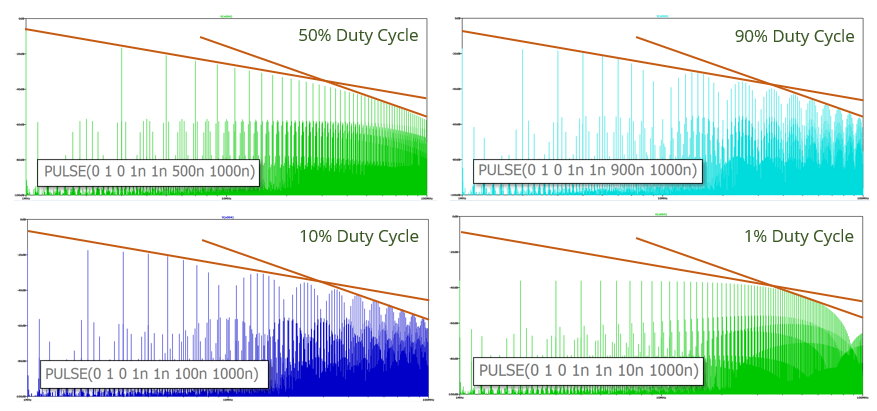EMC Question of the Week: May 22, 2023

If a pulse-width-modulated signal has a fixed transition time, which duty cycle produces the most power at the switching frequency?
- 1%
- 10%
- 50%
- 90%
Answer
The best answer is “c.” The signal power at DC is proportional to the duty cycle, but the power at the switching frequency is maximum with a 50% duty cycle. Duty cycles lower or higher than 50% have less power in the lower harmonics. In fact, the power at every non-zero harmonic of a signal with an x% duty cycle is equal to the power in the same harmonic of the same signal with a (100 - x) % duty cycle. So, for example, a signal with a 10% duty cycle has the same harmonic content as the same signal with a 90% duty cycle.

In terms of the envelope of the harmonic amplitudes, a 50% duty cycle is the worst case. However, the position of nulls in the spectrum at the higher harmonics is a function of the duty cycle, so a 50% duty cycle does not produce the worst-case emissions at every frequency.
Have a comment or question regarding this solution? We'd like to hear from you. Email us at
